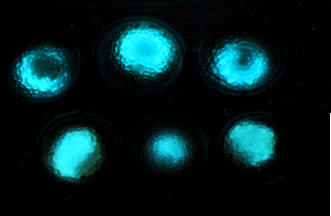Israeli researchers have revealed their high-tech answer to the global need for a safe, efficient way of clearing minefields: a remote system using lasers and bacteria to map the location of buried landmines and unexploded ordnance.
The invention is bound to be sought eagerly worldwide. About half a million people around the world are survivors of mine-inflicted injuries, and each year an additional 15,000 to 20,000 more people are injured or killed by these devices. More than 100 million landmines are believed still to be buried in at least 70 countries.
Surprisingly, the methods currently used for detecting landmines are not much different from those used in World War II, and require personnel to risk life and limb by physically entering the minefields.
In the April 11 issue of the journal Nature Biotechnology, researchers from the Hebrew University of Jerusalem explain that their innovation is based on the observation that all landmines leak tiny quantities of explosive vapors, which accumulate in the soil above them.

But until now there wasn’t any way to “read” these markers. So the team molecularly engineered live bacteria to emit a fluorescent signal when they come into contact with the vapors on the ground. This signal can be recorded and quantified from a remote location.
The bacteria were encapsulated in small polymeric beads and scattered across the surface of a test field in which real antipersonnel landmines were buried. Using a laser-based scanning system, the test field was remotely scanned and the location of the buried landmines was determined.
“Our field data show that engineered biosensors may be useful in a landmine detection system,” said Prof. Shimshon Belkin, whose group at the university’s Alexander Silberman Institute of Life Sciences was responsible for genetically engineering the bacterial sensors.
“For this to be possible, several challenges need to be overcome, such as enhancing the sensitivity and stability of the sensor bacteria, improving scanning speeds to cover large areas, and making the scanning apparatus more compact so it can be used onboard a light unmanned aircraft or drone,” Belkin said.

The Israeli scientists believe this is the first demonstration of a functional standoff landmine detection system.
Other research groups participating in this study at the Hebrew University were led by Prof. Aharon J. Agranat from the department of applied physics and the Brojde Center for Innovative Engineering and Computer Science (design and construction of the remote scanning system); and Prof. Amos Nussinovitch from the Robert H. Smith Faculty of Agriculture, Food and Environment (bacteria encapsulation in polymeric beads).

















